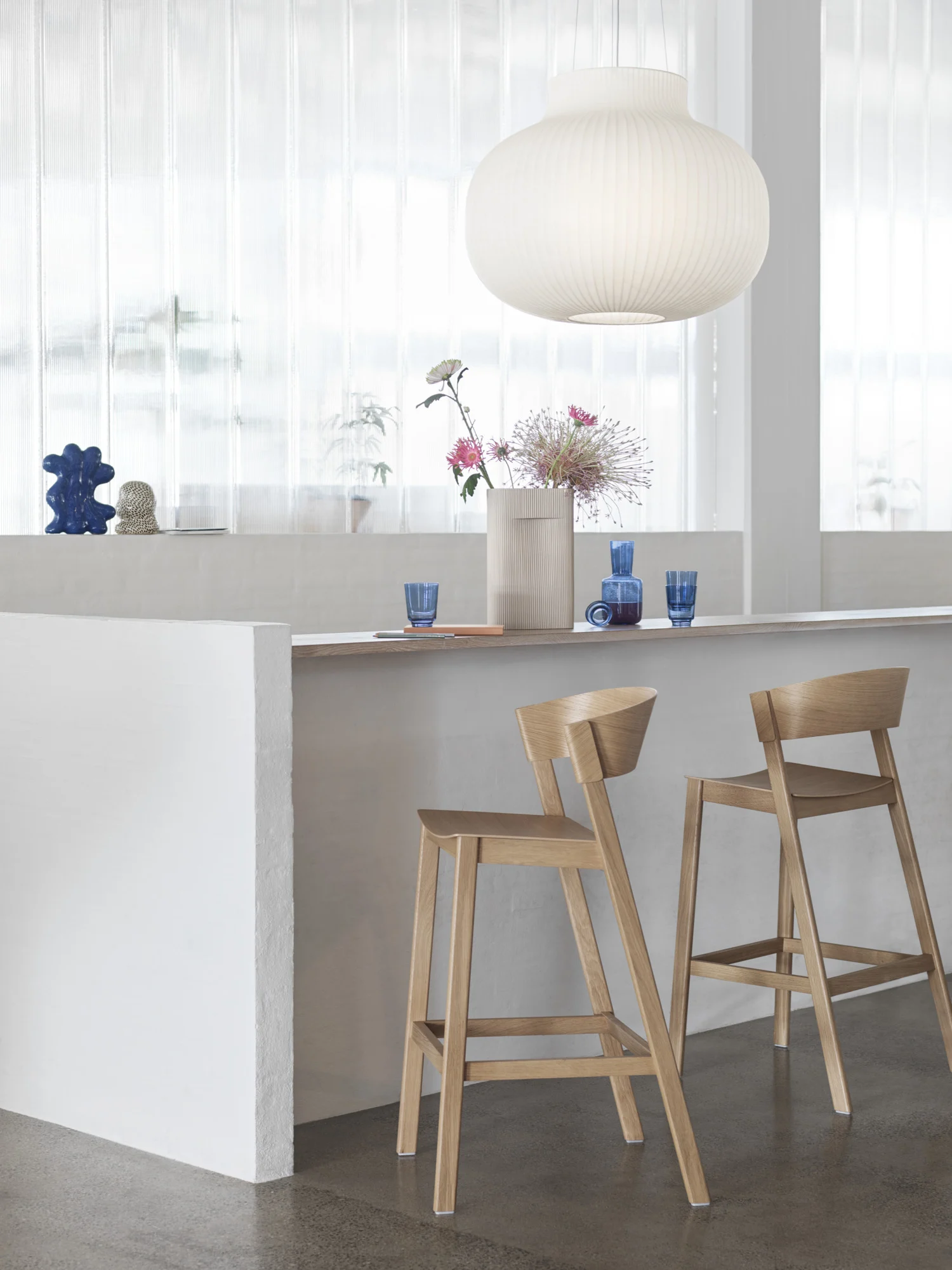
Kitchen Stools Selection: Guide to Making the Right Choice
Why Kitchen Stools Matter: Setting the Scene
In modern homes, kitchen stools have evolved into a crucial design element.
Beyond their basic utility, kitchen bar stools play a dual role: they offer a comfortable seating solution and amplify the aesthetics of spaces where families frequently congregate. The kitchen, traditionally the home’s heartbeat, warrants kitchen stool choices that reflect its centrality.
It’s evident that stools for the kitchen transcend mere functionality; they’re instrumental in defining the space’s vibe and atmosphere. With open-plan living becoming a staple in contemporary homes, kitchen counter stools seamlessly integrate the kitchen with adjacent living zones, fostering a unified interior theme.
Navigating through this guide, we’ll delve into the nuances of picking the right bar stools for the kitchen. From understanding style subtleties to determining the optimal height – like deciphering how high stools should be for a kitchen island – every facet will be meticulously explored. Whether you’re wondering how to choose bar stools for the kitchen or how many stools for a kitchen island would be apt, this guide promises comprehensive insights. Embark with us on a journey to pinpoint the quintessential kitchen bar stool for your culinary space.
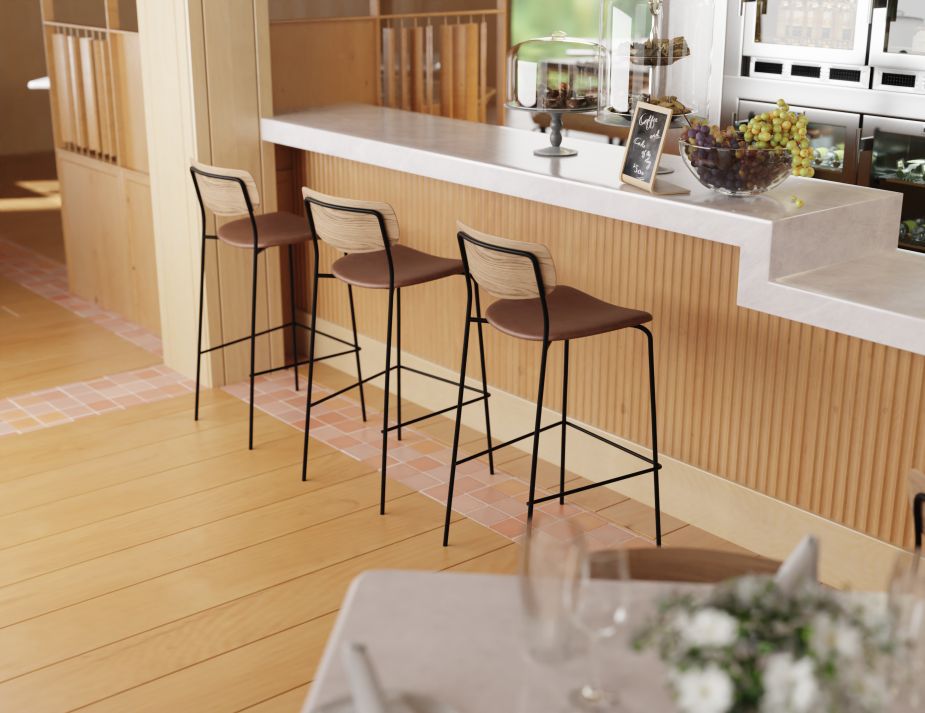
Marrying Style & Substance: Counter Stools that Match Your Kitchen Vibe
The kitchen, often seen as the home’s heart, is more than just a space for culinary endeavours; it’s a canvas of your individual taste and lifestyle nuances. This makes the integration of kitchen stools and kitchen counter stools pivotal, as they need to mirror the room’s overarching design ethos. When embarking on the journey to identify the ideal kitchen stool, it’s vital to envision the larger design landscape, does your kitchen radiate a cutting-edge modern vibe or echo timeless elegance?
For aficionados of contemporary kitchen aesthetics, streamlined counter stools boasting minimalist attributes are the go-to. Visualise metallic sheens, uncluttered lines, and a sophistication that’s devoid of excess. Such kitchen stools naturally accentuate the modern ambience, resonating with avant-garde kitchen gadgets and high-tech appliances.
Conversely, ageless kitchens, distinguished by their wooden cabinetry and perennial fixtures, invite kitchen bar stools that exude a nostalgic allure. Think deep timber tones, meticulous carvings, and cushioned seats that beckon one to sit. These wooden kitchen stools or timber kitchen stools amplify the room’s inherent warmth, making it an inviting haven.
Yet, the essence is in achieving equilibrium. While the allure of trending bar stools in the kitchen might be strong, wisdom lies in selecting pieces that meld effortlessly with your kitchen’s pre-established decor. Aim for a symbiotic relationship where the stools for the kitchen elevate its charisma, without eclipsing its innate beauty.
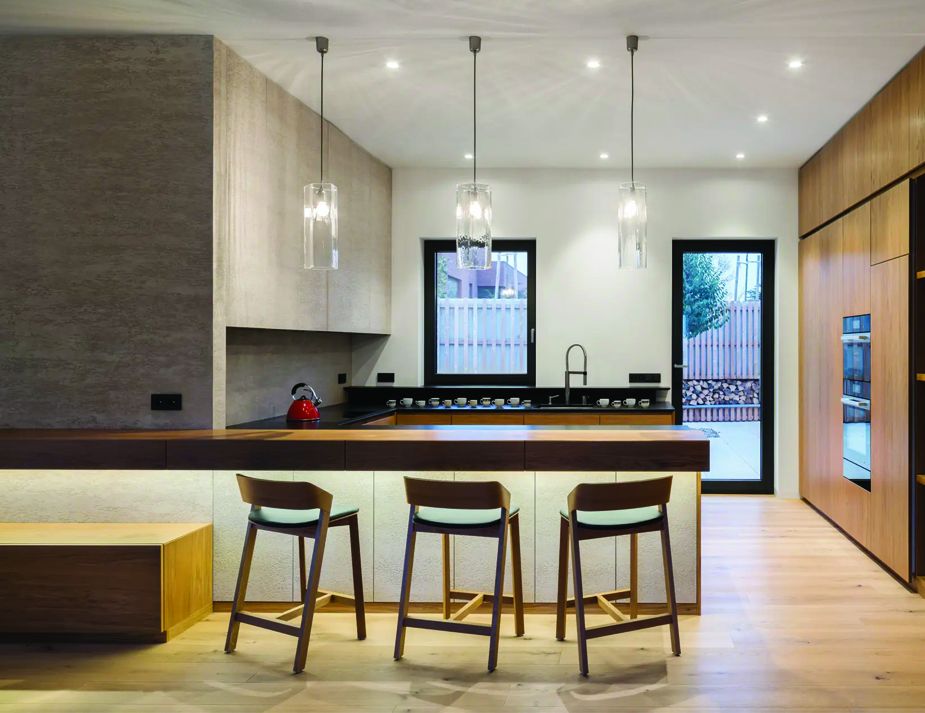
Measure Your Counter Height: Precision Leads to Perfection
One of the foundational steps in selecting the right kitchen or counter stools lies in accurate measurements. Misjudging even by a few inches can lead to an uncomfortable seating experience, disrupting the harmony of your kitchen space.
Standard Counter Heights and the Appropriate Kitchen Stool Height
Typically, kitchen counters fall into two main categories: standard counters and bar-height counters. Standard counters usually measure between 36 to 39 inches tall. For these, stools with a height ranging from 24 to 26 inches are most suitable. This allows for an optimal 10-12 inches of legroom between the stool seat and the counter’s underside.
Conversely, bar-height counters, often found in modern kitchen islands, stand taller at around 40 to 42 inches. The ideal counter stools for these surfaces should measure between 28 to 30 inches in height.
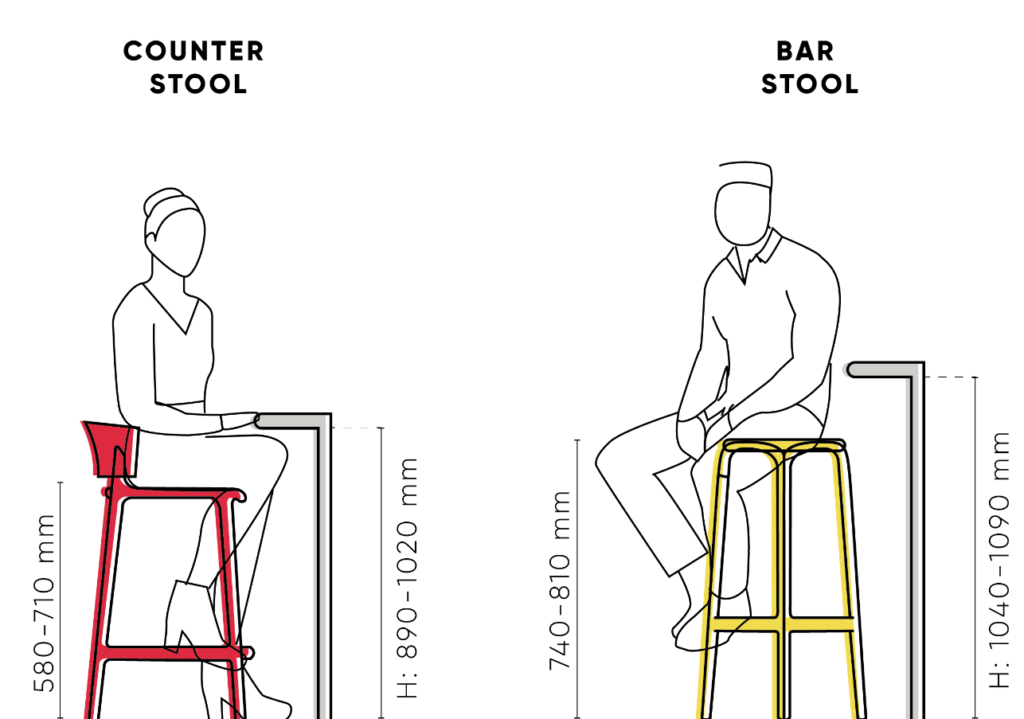
Importance of Ensuring Comfort and Ergonomics in Counter Stools
Beyond aesthetics, the ergonomics of your kitchen seating plays a pivotal role. After all, a stool that looks appealing but offers little in terms of comfort defeats its purpose. When there’s ample legroom and the stool’s height is proportionate to the counter, it fosters a relaxed and ergonomic seating posture. This becomes especially crucial if you or your guests spend extended periods at the counter, be it for dining, working, or casual conversations.
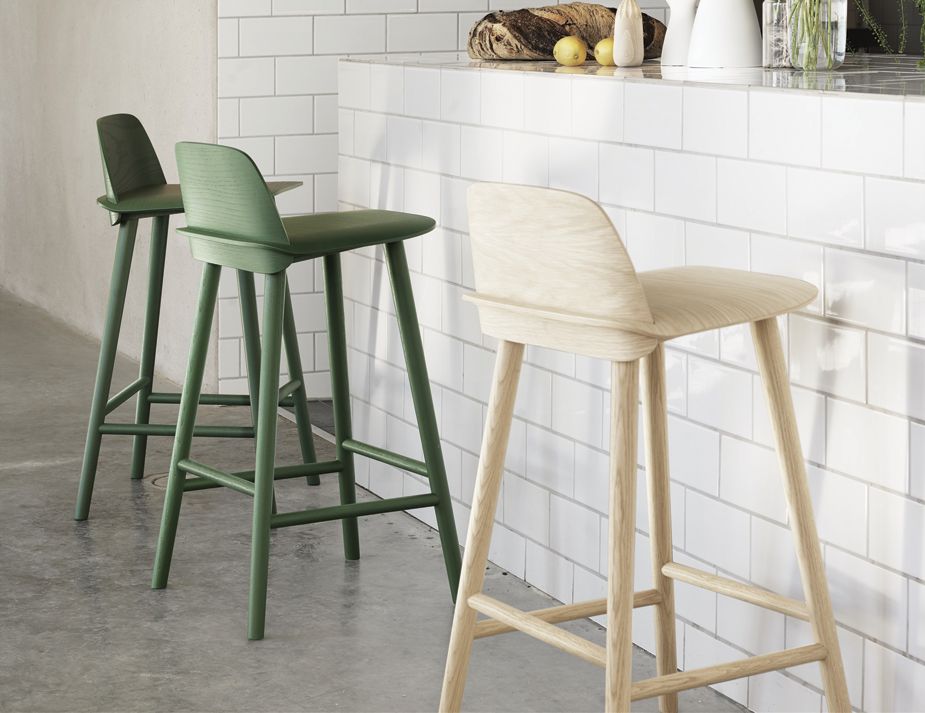
Decide on the Number of Kitchen Stools Needed
Determining the number of kitchen stools and counter stools for your space isn’t merely a calculation of seating needs; it’s a delicate dance of spatial arrangement. Overcrowding with too many bar stools in the kitchen can render the area congested, while sparse placement might not harness the counter’s full potential.
The Rule of Thumb for Spacing Kitchen Stools
When contemplating spacing, there exists a tried-and-true guideline to strike a balance between comfort and visual appeal. For stools endowed with arms or those with a swivel feature, targeting a gap of 24 to 30 inches from one stool’s centre to the next is advisable. Conversely, for armless and non-swivelling kitchen stools, a spacing ranging from 20 to 25 inches usually hits the mark. Adhering to this ensures every individual enjoys sufficient elbow room to dine, engage, and relax without the constraints of tight spacing.
Balancing Aesthetics with Functionality
The kitchen, often bustling with activity from dawn’s early breakfasts to evening’s leisurely chats, demands stools for the kitchen that meld utility with style. While it’s undeniable that your stools should be functional powerhouses, their role in shaping the kitchen’s ambience is equally pivotal. In your stool quantity deliberations, ponder over the visual impact they imprint on the space. Say, if you’re blessed with an elongated counter but gravitate towards a clutter-free aesthetic, spacing out fewer stools might resonate with your vision. On the flip side, if you’re keen on evoking a spirited, diner-esque ambience, positioning stools in closer proximity could be the winning strategy.
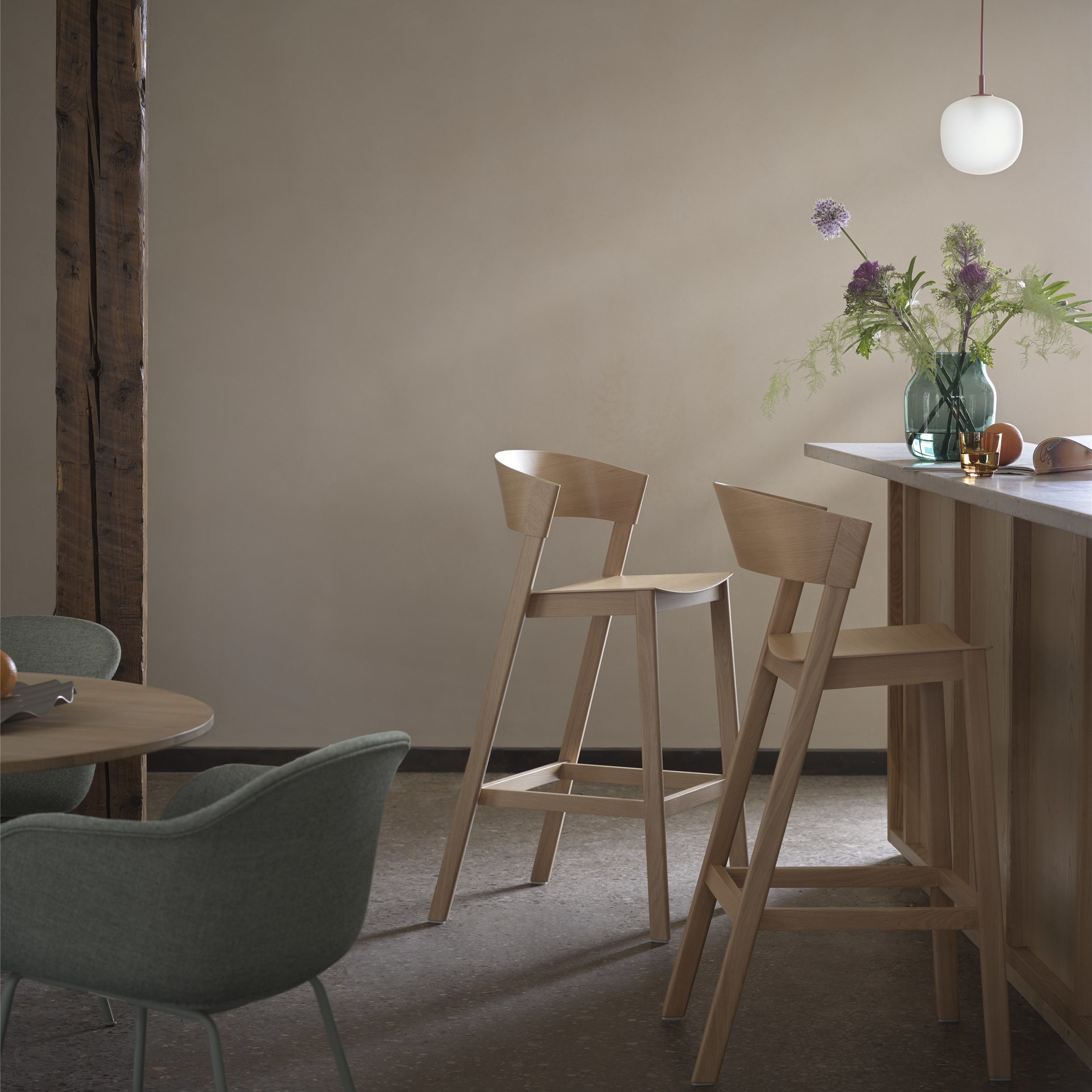
Material Matters: Choosing the Right Substance for Your Counter Stools
The material of your kitchen and counter stools is more than a design decision, it directly impacts durability, maintenance, and the stool’s overall lifespan. As with all furniture choices, each material comes with its own set of advantages and challenges. Let’s dive into the key materials to consider and what they bring to the table.
Pros and Cons of Different Kitchen Stool Materials
Wood
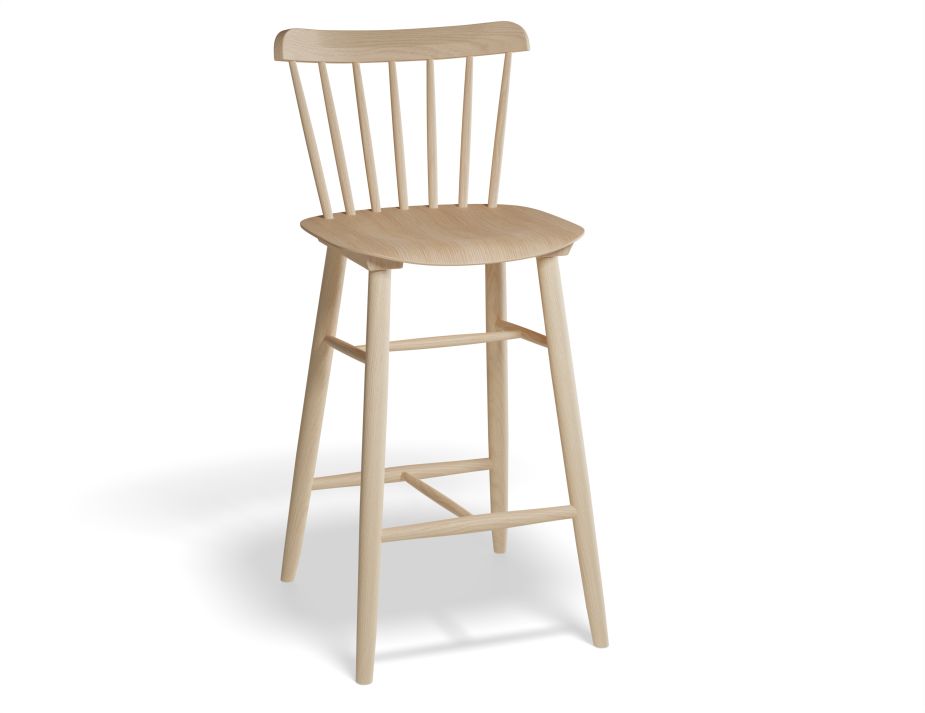
Metal
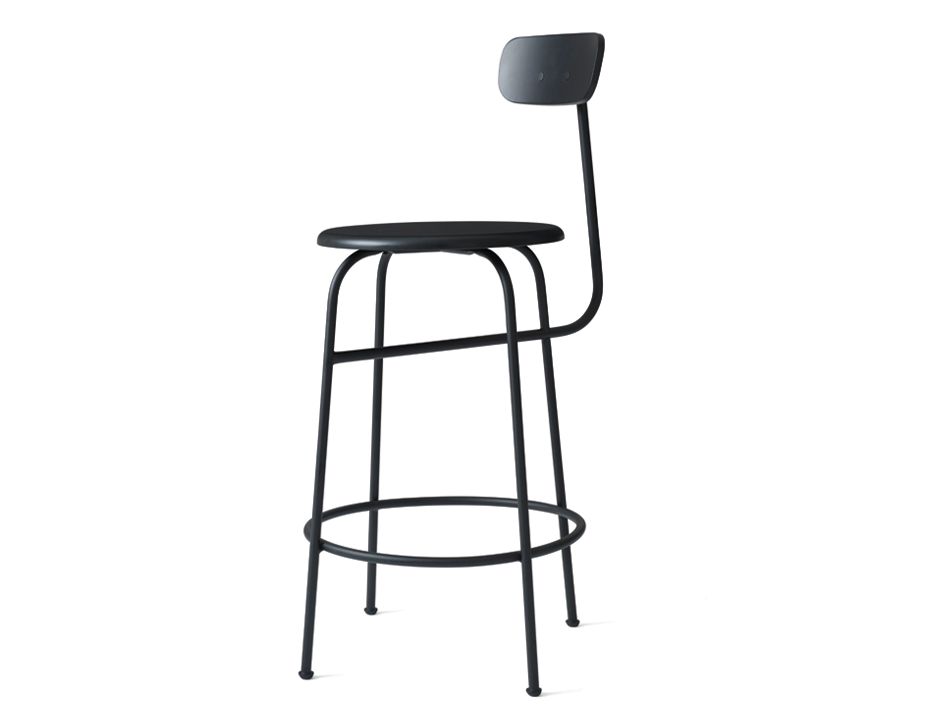
Plastic
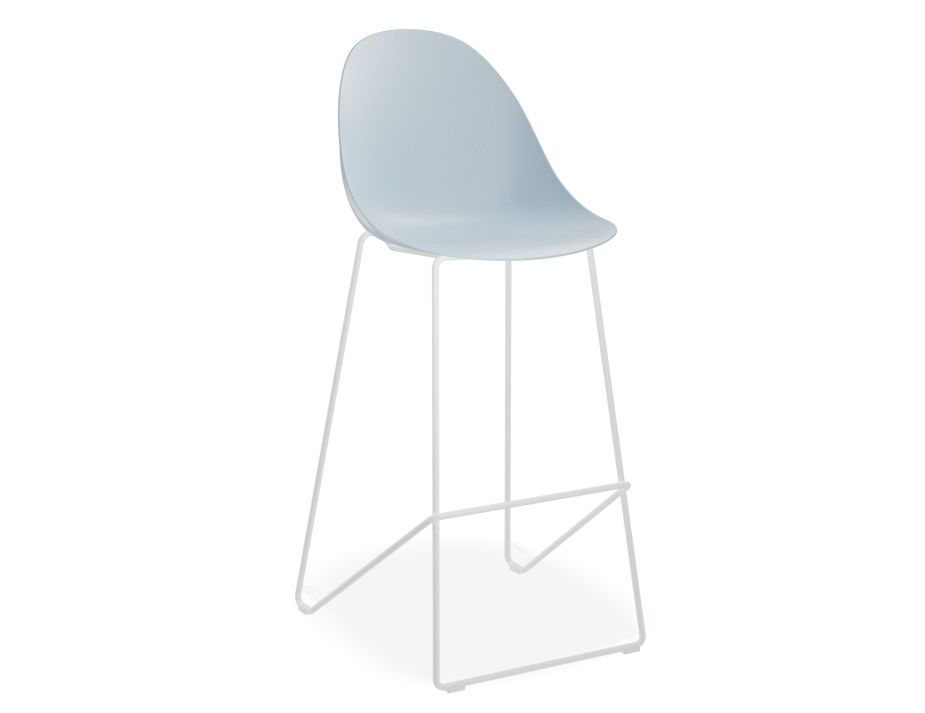
Maintenance and Durability Considerations
The longevity of your stools significantly depends on the material and how you care for them. For instance, while metal stools might boast of durability, they may require occasional treatments to prevent rusting, especially in humid climates. Wooden stools, on the other hand, can last for generations with proper care, but they might need frequent polishing or refinishing to combat signs of wear.
Plastic stools, while requiring minimal maintenance, might not offer the same durability as their wooden or metal counterparts. However, their budget-friendly nature and design versatility make them a popular choice for many homeowners.
When selecting the material for your kitchen stools, it’s essential to weigh the aesthetic appeal against practicality. Consider factors like the kitchen’s usage, climate, and your willingness to maintain the stools to make an informed decision.

Consider the Seat Style: Comfort Meets Character in Kitchen Stools
The style of the seat in your kitchen and counter stools can drastically influence both the aesthetic appeal and the comfort level of your seating. Whether you prioritise a sleek design or ergonomic support, understanding the nuances of seat styles can guide you to an optimal choice.
Back Stools:
- Advantages: These stools offer enhanced support, making them ideal for extended seating durations. They also add a more formal look to the kitchen.
- Drawbacks: They tend to be bulkier and might obstruct the view if your kitchen opens to another room or has a scenic outside view.
Backless Stools:
- Advantages: Sleek and space-saving, backless stools are perfect for minimalist counters with limited space. They can easily tuck under counters when not in use.
- Drawbacks: They might not provide the same level of comfort for prolonged seating.
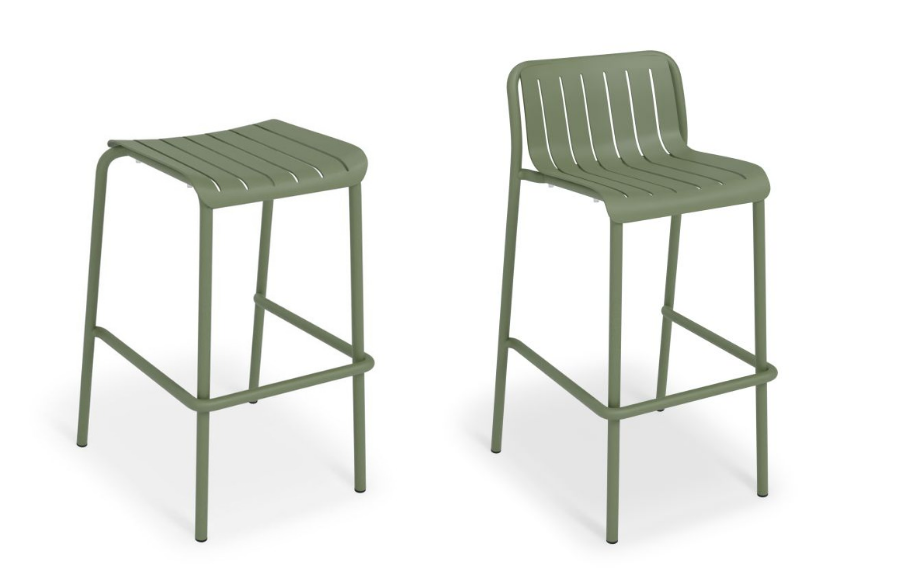
Cushioned Seats:
- Advantages: They offer additional comfort, especially when the seating duration is longer. Cushions also provide an opportunity to introduce colour and patterns to your kitchen decor.
- Drawbacks: Requires more maintenance, especially if there are spills. The cushion material can wear out over time.
Non-Cushioned Seats:
- Advantages: Easy to clean and maintain. They offer a clean, streamlined look.
- Drawbacks: Might not be as comfortable as cushioned options, especially for extended periods.
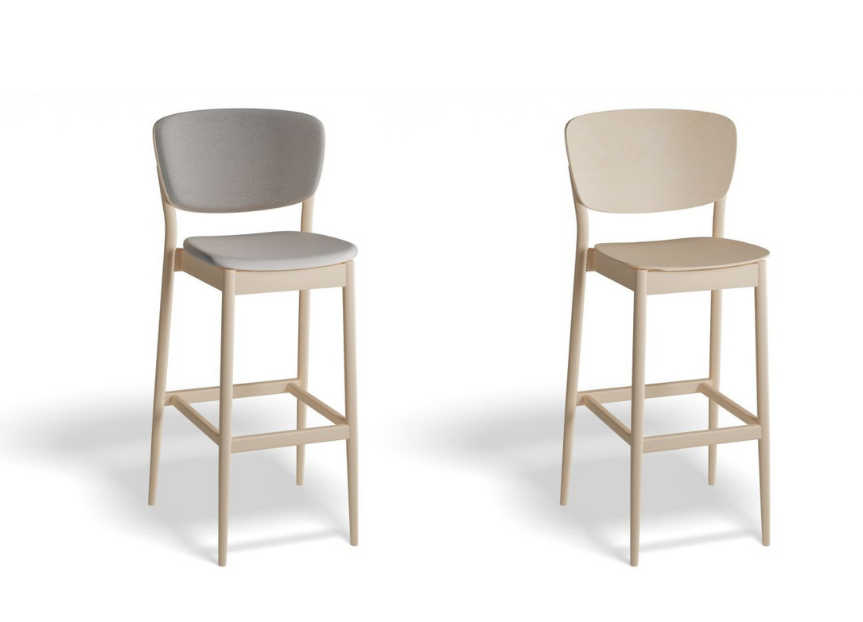
Swivel Stools:
- Advantages: Allows for easy movement and flexibility, especially in interactive kitchen spaces or when multitasking.
- Drawbacks: The swivel mechanism might require occasional maintenance or tightening.
Stationary Stools:
- Advantages: Sturdy and stable, with no moving parts that could wear out.
- Drawbacks: Lacks the mobility that swivel stools offer, which might be preferred in more dynamic settings.
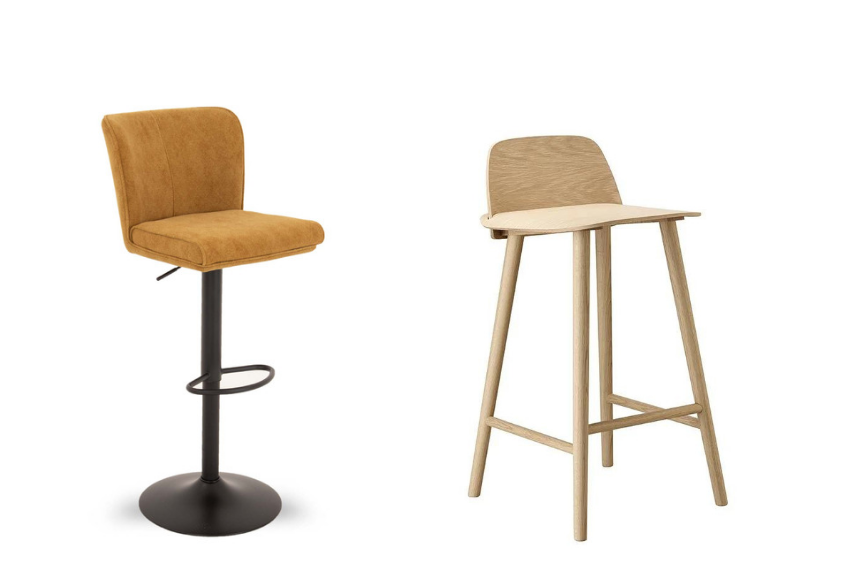
Think About Footrests: The Understated Element of Seating Comfort
While the design and material of kitchen and counter stools often take centre stage, the footrest is an element that, though subtle, plays a crucial role in determining seating comfort. A well-designed footrest not only supports posture but also enhances the overall seating experience.
The Role of Stool Footrests in Enhancing Comfort
Footrests provide a platform for placing feet, reducing the strain on the legs and lower back, especially when seated for extended durations. Without a proper footrest, legs may dangle uncomfortably, leading to fatigue and discomfort. This is especially true for taller counters where feet might not touch the ground. By offering a place to rest one’s feet, footrests promote better circulation and alleviate pressure points.
Circular Ring Footrests
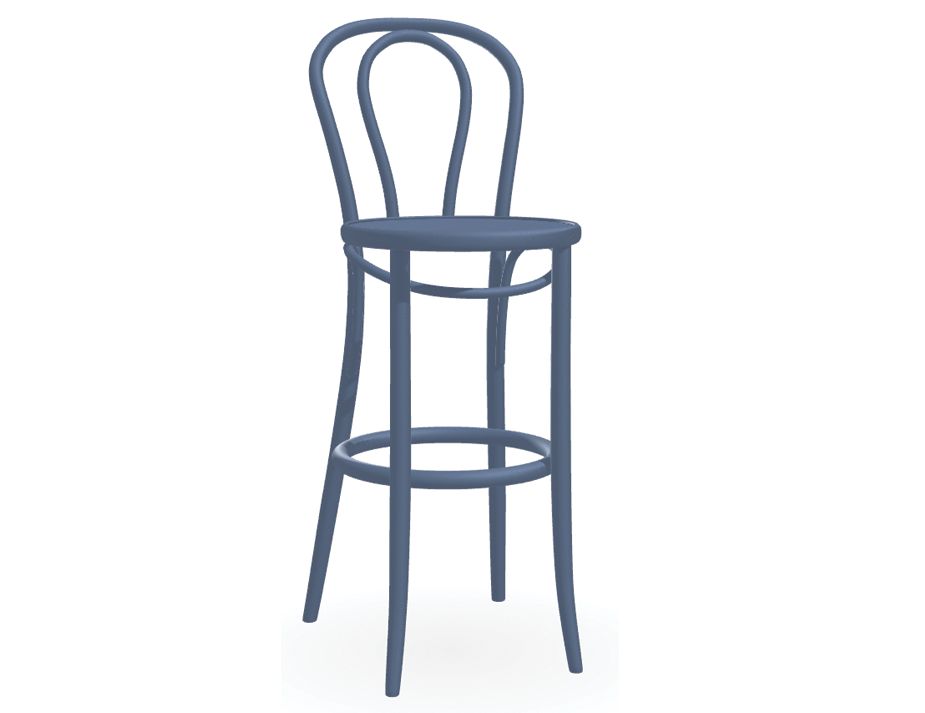
Horizontal Bar Footrests
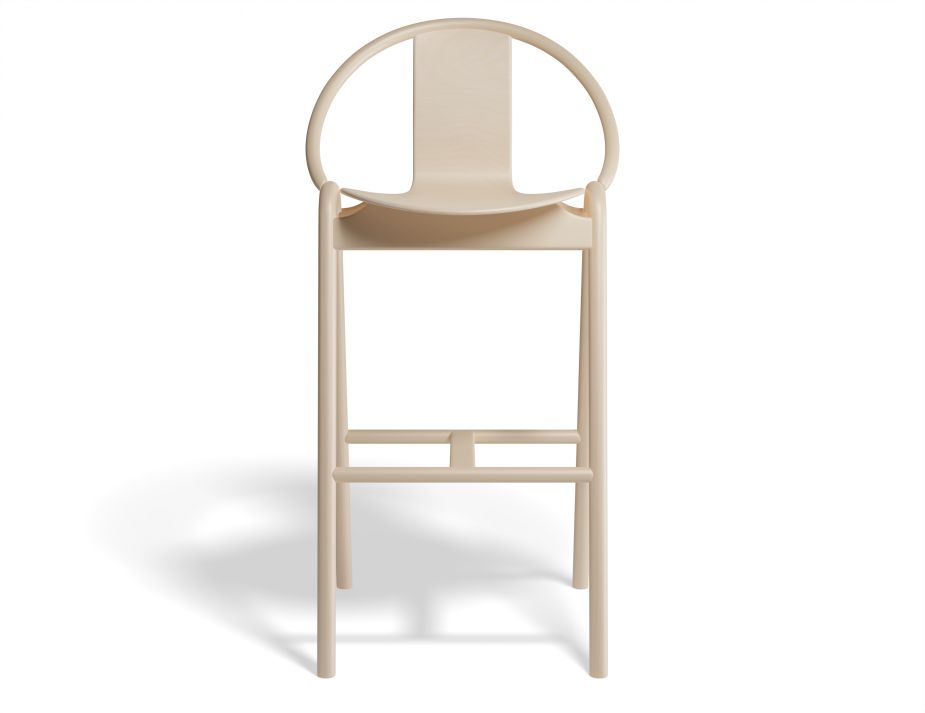
Ease of Cleaning and Maintenance: Ensuring Longevity and Lustre
Your kitchen is a bustling space, with meals prepared, conversations shared, and memories created. Given this hive of activity, kitchen and counter stools are bound to experience spills, stains, and daily wear. Choosing materials that stand up to these challenges and are easy to maintain can ensure your stools remain a centrepiece of attraction.
Tips for Maintaining the Shine and Look of Your Kitchen Stools
Regular Dusting: Dust can dull the appearance of stools over time. Regular dusting maintains the stool’s sheen, especially for wooden stools.
Avoid Direct Sunlight: Continuous exposure can fade the colour of your stools, especially if they’re made of fabric or wood.
Check for Loose Screws: Regularly inspect your stools for any loose components and tighten them to ensure stability.
Use Protective Pads: If your stools have feet, consider using protective pads. This prevents scratches on the floor and reduces wear on the stool’s base.
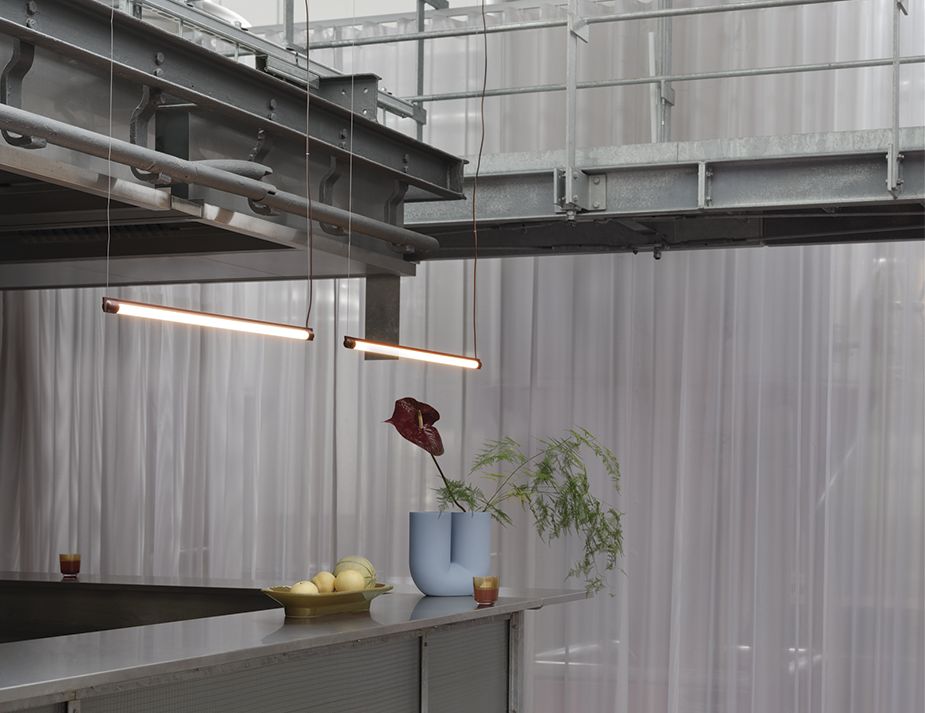
Final Thoughts about Choosing the Right Kitchen Stools
Choosing the right kitchen stools and kitchen counter stools requires a holistic approach, intertwining design aesthetics, user comfort, and practical functionality. As delved into previously, myriad elements, from the type of material to the design of footrests, have a profound impact on a stool’s allure and practicality.
- Grasp the inherent style of your kitchen to ensure the kitchen stool or bar stools in the kitchen you opt for are in harmony with it.
- Comfort should never be compromised. Look for features like adequate back support, the right amount of cushioning, and strategically placed footrests to enhance the seating experience.
- Longevity and minimal upkeep are crucial. Opt for materials known for their durability, ensuring your kitchen bar stools can withstand both time and the rigours of daily usage.
It’s our sincere hope that this guide has shed light on the intricacies of kitchen stool selection, arming you with the knowledge needed for a discerning choice. Here’s to countless cherished moments shared over your kitchen counter!
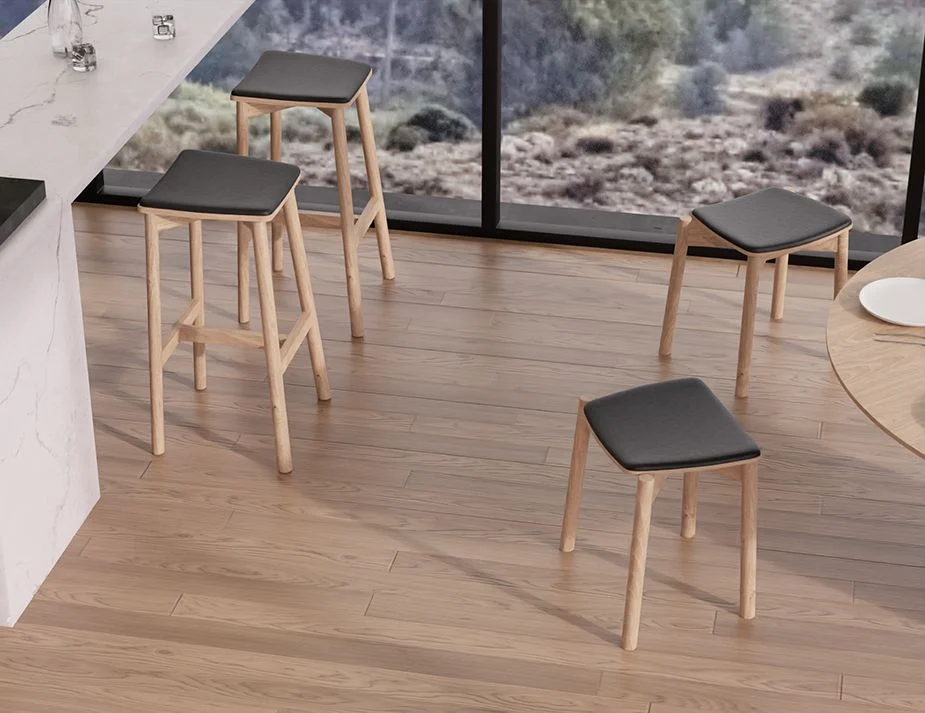
Frequently Asked Questions
Stools with backrests tend to offer more comfort, especially if you intend to sit for extended periods. They provide additional support and can be more inviting, but they might also take up more visual space.
Consider the length of your counter and ensure there’s about 60-75 cm of space for each stool. This spacing ensures comfort and easy maneuverability.
To select the perfect stool height, measure the distance from the floor to the underside of the counter. Ideally, there should be a 23-28 cm gap between the counter and the stool seat for optimal comfort.
Non-slip pads or rubber feet can be attached to the stool’s legs to prevent unwanted sliding.
To create a harmonious flow, use coordinating colours, materials, and design themes. Open-plan layouts, consistent flooring, and matching lighting fixtures can also bridge the two spaces effectively.
